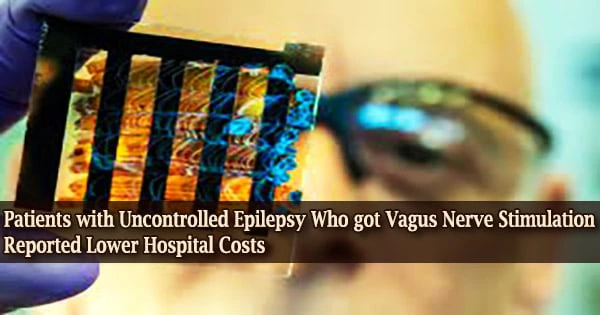A stimulator device is implanted beneath the skin in the chest, with a wire coiled around the vagus nerve in the neck. Vagus nerve stimulation (VNS) is sometimes referred to as a “pacemaker for the brain.” It works by giving frequent, mild electrical pulses to the brain, which helps to prevent seizures. The patient is usually unaware that the device is in use.
A group of young patients with drug-resistant epilepsy was studied in a recent study published in the journal Epilepsia by Ann & Robert H. Lurie Children’s Hospital of Chicago. Patients who received VNS in combination with anti-seizure medications (ASM) had reduced hospital expenditures than those who had ASM alone, according to the study.
When compared to patients who just received ASM, the study indicated that patients who had ASM plus VNS saved over $3,000 in epilepsy-related annual costs per year.
These findings back with the team’s prior findings that VNS plus ASM resulted in much lower inpatient healthcare utilization in children with drug-resistant epilepsy than ASM alone. Epilepsy & Behavior released the study on healthcare utilization.
“We take a health services research perspective on the patients’ journey with a challenging disease process of drug-resistant epilepsy that has not been met with a cure. For patients with drug-resistant epilepsy, reducing seizure burden and addressing quality of life are important goals. We quantify aspects of outcomes of surgical therapies and medical therapies, and we assess the impact on health care costs and utilization. To the patients, families, health care systems, health care advocates, and policymakers, these are important results,” said senior author Sandi Lam, MD, MBA, Division Head of Neurosurgery at Lurie Children’s and Professor of Neurological Surgery at the Northwestern University Feinberg School of Medicine.
“While we show lower costs to the health care system following VNS surgery, from a practical standpoint it means fewer hospital admissions because of seizures. Patients spend their days at home instead of in the hospital.”
The research is distinctive in a number of ways. There has never been a study comparing the results of children with drug-resistant epilepsy who got VNS and ASMs vs those who only received ASMs.
We take a health services research perspective on the patients’ journey with a challenging disease process of drug-resistant epilepsy that has not been met with a cure. For patients with drug-resistant epilepsy, reducing seizure burden and addressing quality of life are important goals. We quantify aspects of outcomes of surgical therapies and medical therapies, and we assess the impact on health care costs and utilization. To the patients, families, health care systems, health care advocates, and policymakers, these are important results.
Sandi Lam
The report also breaks down prices by location of care (inpatient, outpatient, and Emergency Department). The researchers discovered that children treated with VNS plus ASM had lower emergency department expenses than children treated with ASM alone.
While the ASM-only cohort had higher average annual total expenses, the researchers also found that VNS plus ASM had higher outpatient care costs than ASM alone. Children requiring additional outpatient treatment initially after VNS installation is not unusual, according to the study authors, because device adjustment for each patient is essential during this time period.
In the second year, outpatient costs for children with VNS dropped considerably. In the future, research should pay more attention to expenditures and patterns of care in longer-term follow-ups.
National data research is not a substitute for clinical research. Each patient with epilepsy has a unique situation that necessitates individualized clinical care from a comprehensive Level 4 NAEC pediatric epilepsy facility like Lurie Children’s.
Large studies that include health services research can help to inform future research as well as identify gaps and possibilities in health care delivery. Surgical approaches should be part of the epilepsy therapy arsenal, according to the study.
While future research will look at the outcomes of cranial epilepsy surgery, this study was limited to VNS and did not include epilepsy surgery on the brain, which is a common kind of epilepsy treatment. The trial comprised 1113 children (0-17 years old) with refractory epilepsy who were treated with ASM with VNS and 3471 children who were treated with ASM alone.
The data came from the Pediatric Health Information System (PHIS) database of the Children’s Hospital Association, which combines inpatient, emergency department, ambulatory, and observation encounter level data from more than 44 children’s hospitals across the United States. Patients were observed for a year before and two years after fulfilling pre-determined refractory epilepsy criteria.
The Stanley Manne Children’s Research Institute conducts research at Ann & Robert H. Lurie Children’s Hospital of Chicago. Through the tireless pursuit of knowledge, the Manne Research Institute aims to improve child health, reform pediatric care, and ensure healthier futures.
U.S. News & World Report has named Lurie Children’s Hospital as one of the best children’s hospitals in the country. Northwestern University Feinberg School of Medicine uses it as a training ground for pediatricians.
















